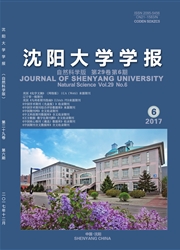

 中文摘要:
中文摘要:
对轧制态2024A1合金进行了495℃固溶处理和190℃不同时间的人工时效处理,采用光学显微镜、场发射扫描电镜、X射线能谱、电化学技术和加速腐蚀试验研究了2024 Al合金的晶间腐蚀性能、腐蚀形貌和显微组织.加速实验结果表明,虽然2024 Al合金易发生晶间腐蚀,但峰时效处理可明显提高合金的晶间腐蚀抗力.动电位极化曲线和电化学阻抗谱实验也获得了相似的结果.时效态2024 Al合金腐蚀模式为局部晶间腐蚀和点蚀.点蚀由晶内第二相颗粒与基体Al间的电偶腐蚀引起,晶间腐蚀由晶界析出相与其周围的贫Cu区间以及基体Al与贫Cu区间的电偶腐蚀引起.
 英文摘要:
英文摘要:
The effect of artificial aging on the corrosion properties of 2024 Al alloy was investigated by optical microscope, field emission scanning electron microscope, electrochemical method and accelerated corrosion test. Accelerated corrosion test revealed that the alloy was susceptible to intergranular corrosion (IGC) in the artificial aging conditions according to the surface and cross- section corrosion morphologies, and the peak aged sample exhibited the highest IGC resistance. The corrosion mode was localized IGC and pitting. Polarization curve and electrochemical impedance spectra also showed that the peak aged treatment could be beneficial to get higher IGC resistance. The corrosion mechanism of pitting was contributed to galvanic corrosion between secondary phase particles and matrix Al, and IGC resulted from galvanic corrosion between grain boundary precipitates and Cu-depleted zone, as well as Cu-deDleted zone and matrix Al.
 同期刊论文项目
同期刊论文项目
 同项目期刊论文
同项目期刊论文
 期刊信息
期刊信息
